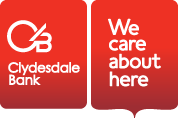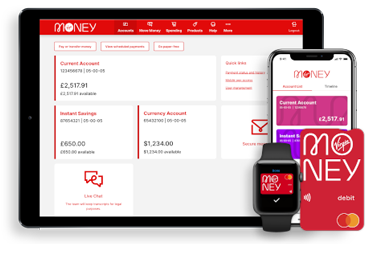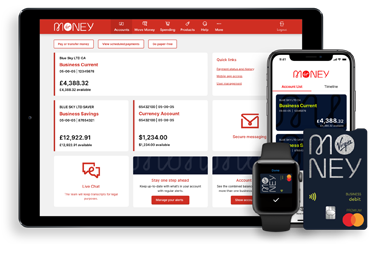How to justify a price increase without losing sales
< back to all business news articles
28/07/2017
One of the best ways to get more cash coming into your business is to increase your prices. It widens your margins and frees up cash you might need for business growth. It’s something that should be done now and again, even if it’s just to keep up with inflation. But if the price between your business and the competition is too wide, you may see customers buy elsewhere.

Before you increase your prices
There are some key factors to be aware of before you hike up the price sticker. Most important is not alienating your customers by increasing your prices too dramatically.
It could be as easy as conducting market research to tell you what the competition is charging and what your customers are willing to pay. If you are cheaper, you could just amend your pricing up.
Keep the following in mind:
- • Convince customers you’re worth the extra money. This is where you emphasise your unique selling point – great customer service, free delivery, superior product – so that your customers agree you’re worth paying more for. You’ll also reduce the risk of them going to the competition if you can convince them a price hike is justified.
- • Ensure a great customer experience. Make sure staff are well-trained, knowledgeable and friendly. Dealing quickly and efficiently with customer complaints is essential. People will pay more if the customer experience is second-to-none. Think of the times you’ve paid more rather than go with a budget service, because you know you’ll be treated well.
- When you’re increasing your prices, try to stagger them over time, instead of raising them all at once, and consider limiting your increase to products that are higher value, as the price increase should be lower as a percentage of the overall price.
- The conditions of terminating a franchise agreement
- Often very small price increases (such as 1-5%) go unnoticed.
- Keep prices stable on products and services that you know customers will compare with the competition, and increase those that are less price sensitive, or the competition doesn’t offer.
- Add new features or extra services (which may cost very little or nothing) to offer as a bundle.
- See if you can identify a new market that may not be as price sensitive. Launch in this market with your increased price.
- Consider the start or end of any contracts; a perfect time to increase price as part of a new agreement.
- If you charge by the hour, consider bundling up your services into a fixed price agreement, where you’ll know on average you’ll complete fewer hours for most clients.
- Select only customers where your costs are a very small part of their business. Increases will then have minimal impact on their overall operation.
- If you only have a few customers, negotiate one by one, especially those that are key customers.
- Separate out customers who are not spending their own money, such as large corporate customers who have budgets to spend. They may be less sensitive to a price increase, and it could be more hassle to switch to a cheaper provider (statements of work, supplier registration) than agreeing to a small price increase.
- Reduce the size/quantity and keep the price the same. This is quite often used in the food industry, where packs are smaller but the price is the same.
- Increase the size/quantity but have a larger percentage price increase.
- Be aware of timing; if you’re selling to consumers increase prices on the most common day people get paid. If it’s business to business, avoid tax payment dates. Any time where your customer may feel financial pressure.

The warning signs when to increase your price
There are two key signals to increase your price.
First if your business is overstretched, you can’t fill enough orders, there are not enough hours in the day, you’re working all night and weekends. A price increase will do two things; increase your profit so you can increase capacity, or some customers will drop off where you’ll find you’re working less but making the same profit (as the price increase will raise your margins).
Second if your business indicators are deteriorating; gross profit or net profit percentages are declining. This can indicate costs are rising and your prices are not following suit.
Communicating your price increase
IThe hardest part of course is actually informing all your customers the price is increasing. Options to consider:
- Increase price and don’t inform anyone (and don’t blink). You’d be surprised (depending on your industry) how often a price increase goes unnoticed.
- Be honest; if you’re selling business to business, chances are they will understand (and be doing the same thing themselves). Tell them why you’re increasing your prices (your material costs have increased, exchange rate has moved so it’s costing you more) as it’s easier to increase price if there is a good reason.
- Give customers warning in advance, rather than an overnight increase. You can talk to them and discuss with any key clients that are unhappy, solutions and options.
- Immediately after the price increase, create a promotion/discounted offer to demonstrate you still offer value. Prepare this in advance.
Summary
Before you decide to increase your prices, do your due diligence on the competition and find out what they’re charging and if you can do better. Keep in constant contact with your customers, and take their feedback on board. Remember that you’re convincing them that the price increase is worth it to them to keep you as a supplier, so the customer experience, product and service must be consistently great.
Advice and resources
POSTED IN: 2017,Cash Flow,Pricing,Startup
SHARE
Related Articles
You can find impartial information and guidance on money matters on the “MoneyHelper” website.
Clydesdale Bank is covered by the Financial Services Compensation Scheme (FSCS), Find out more.


